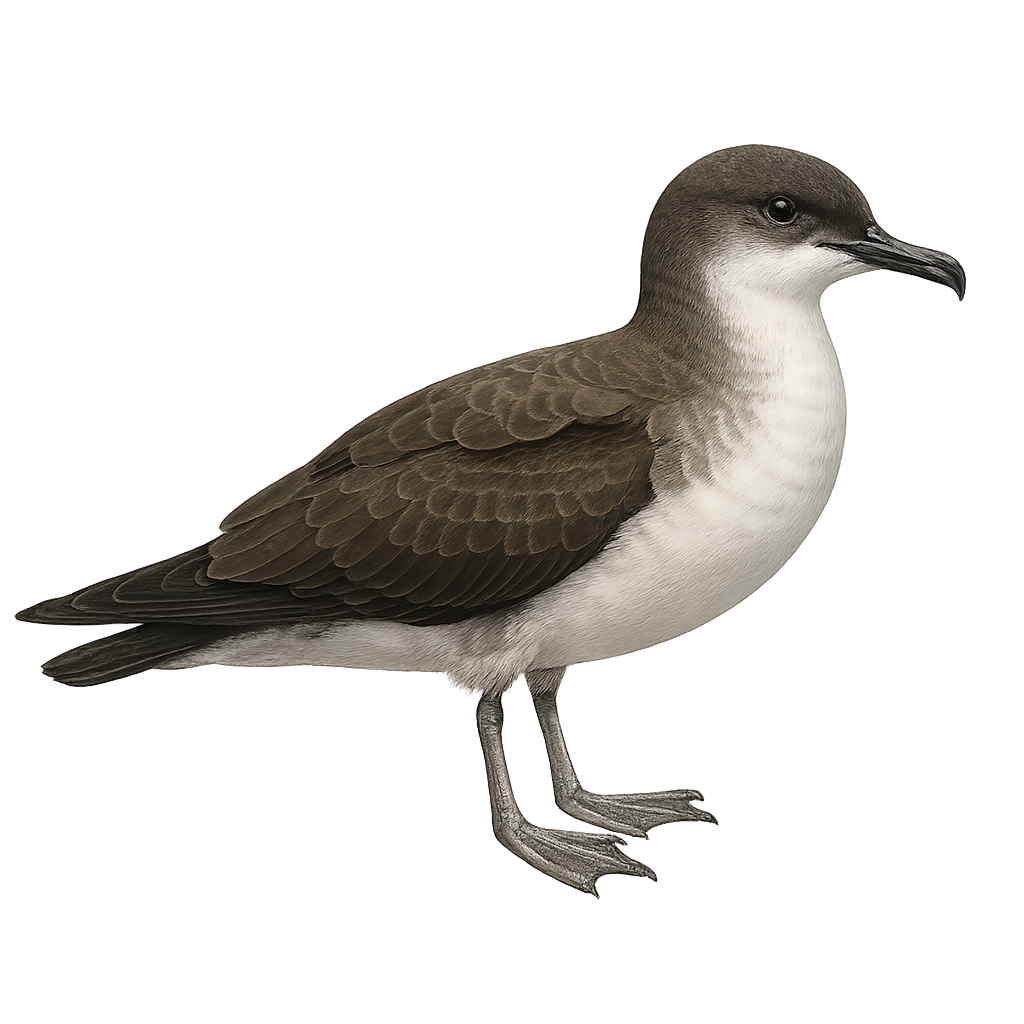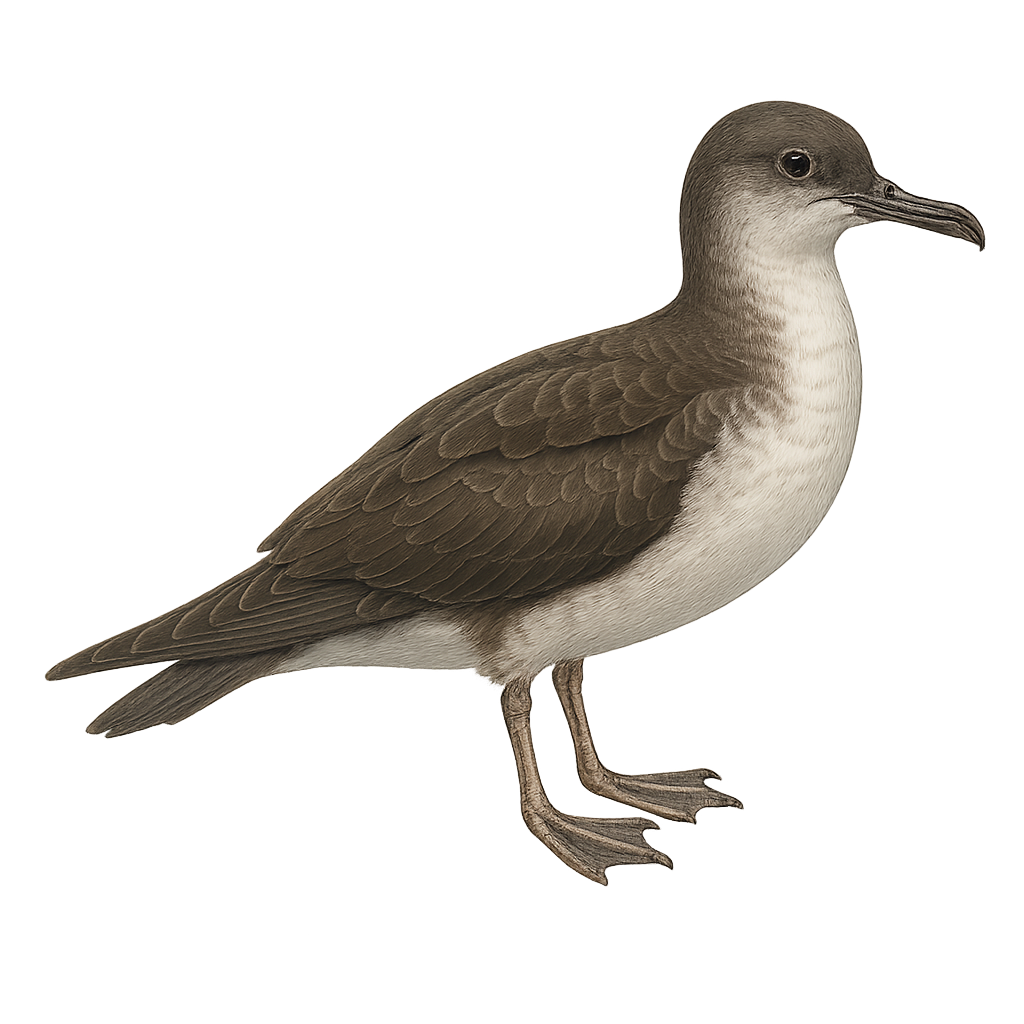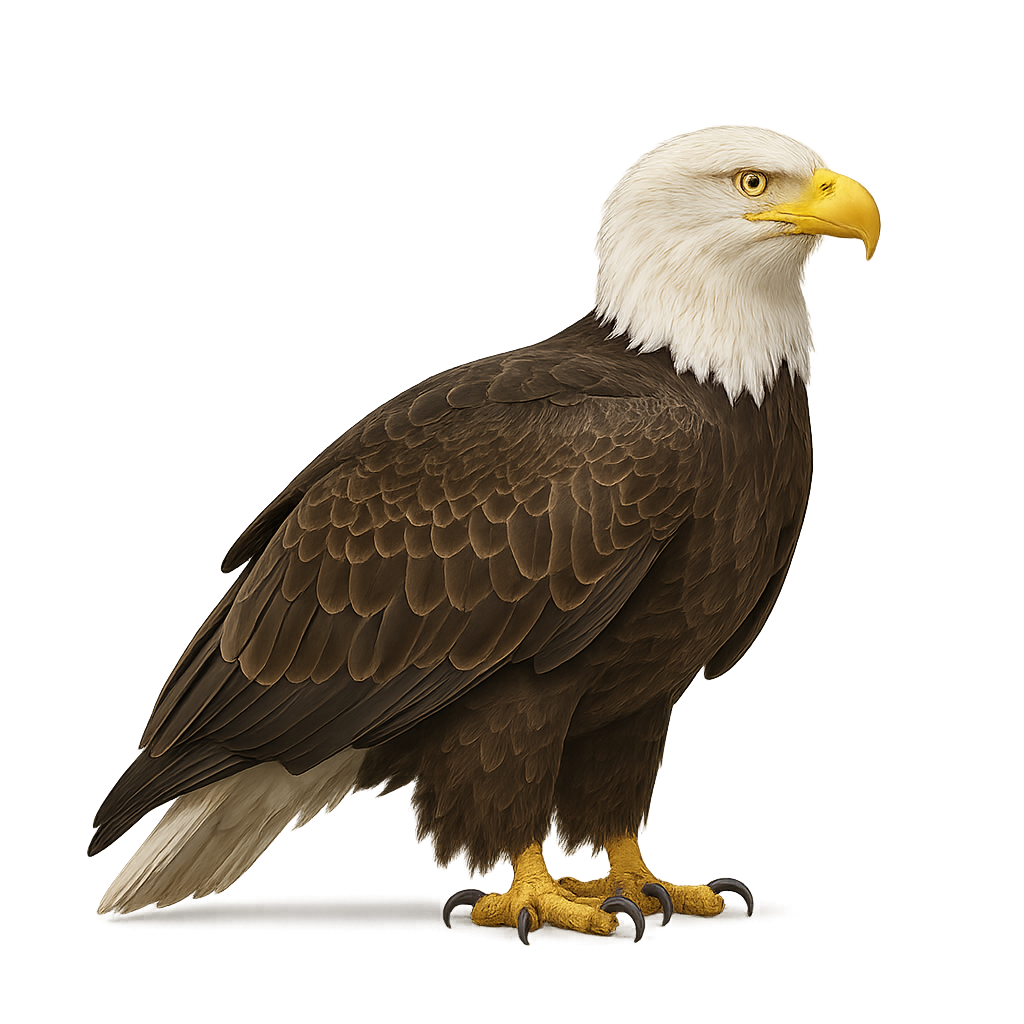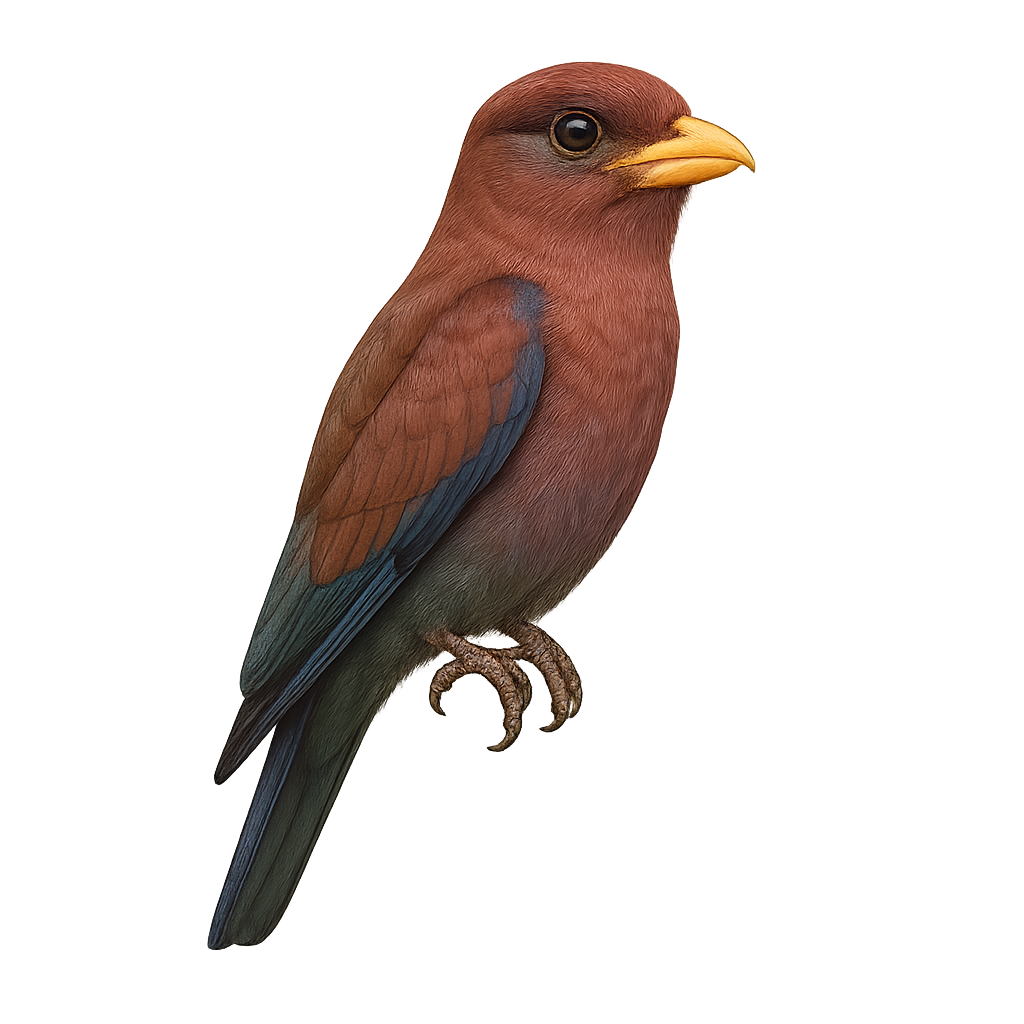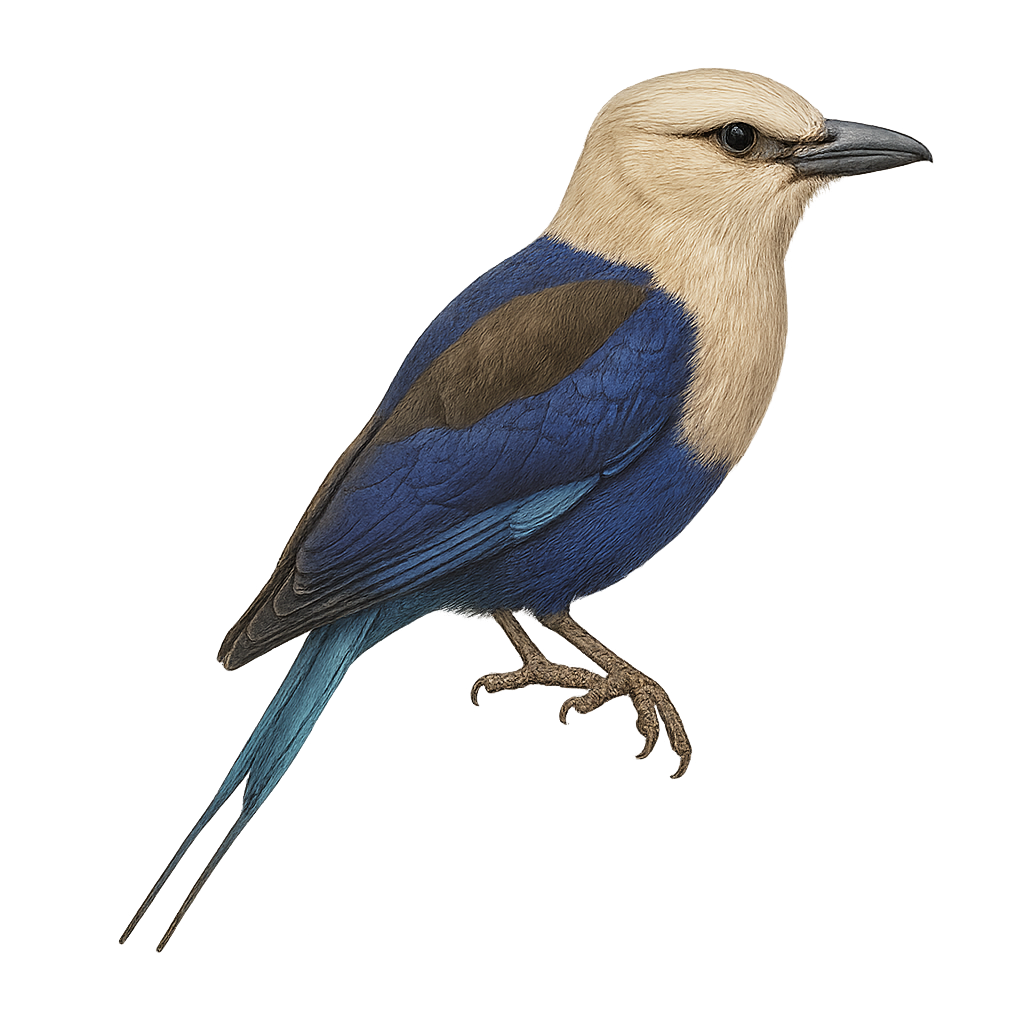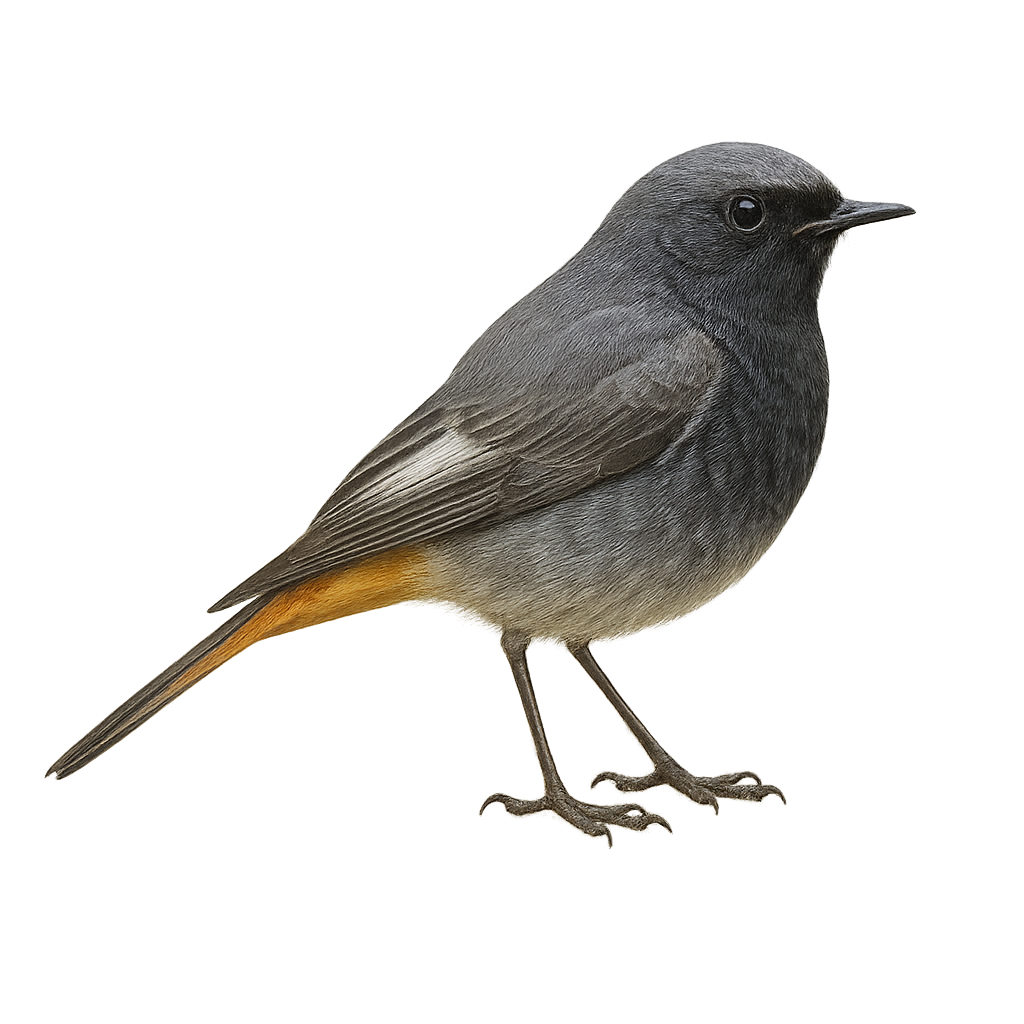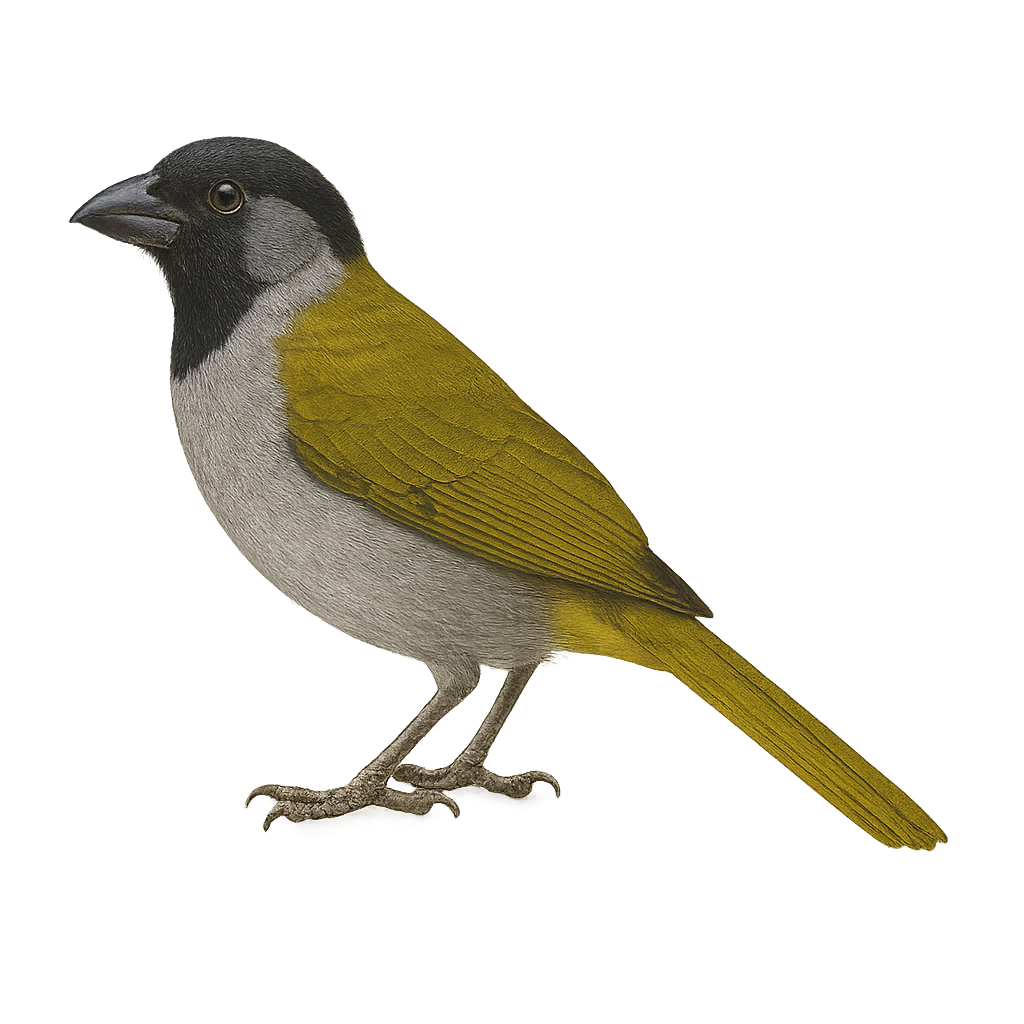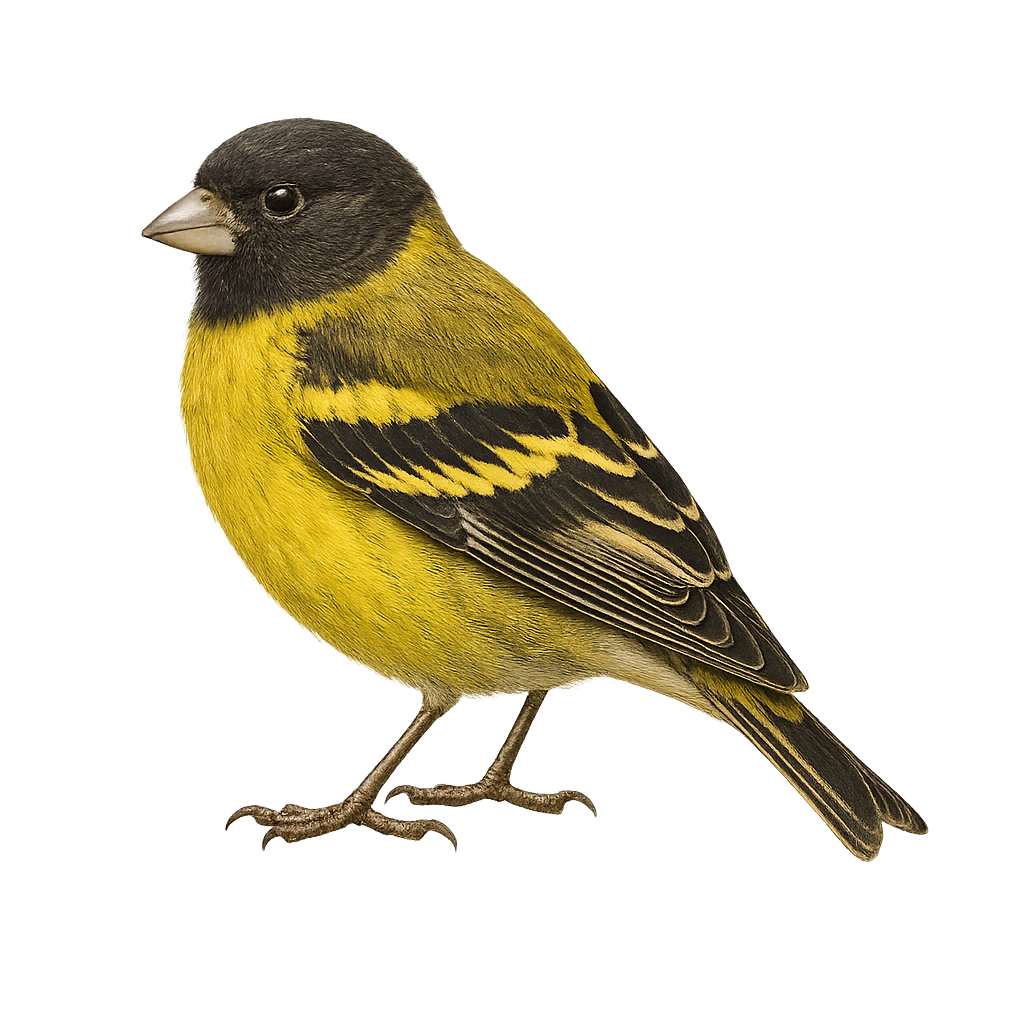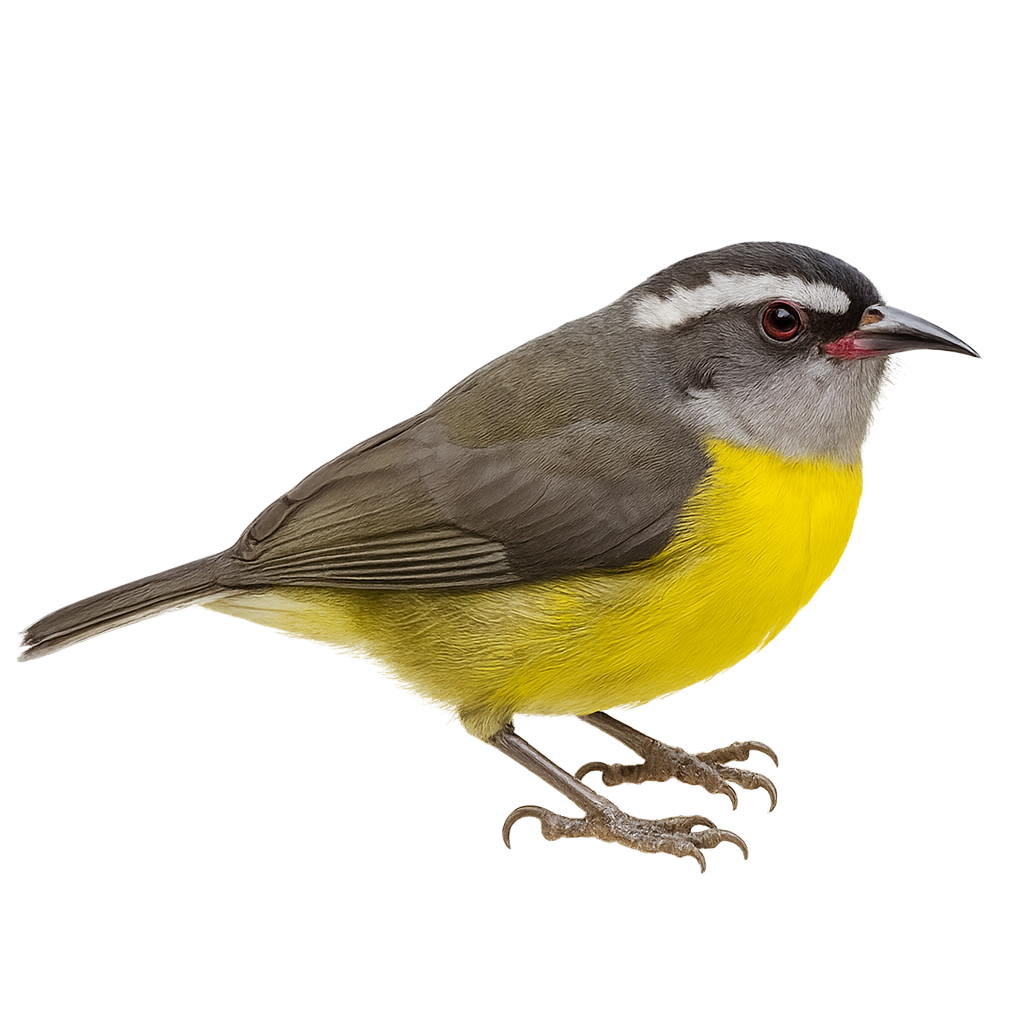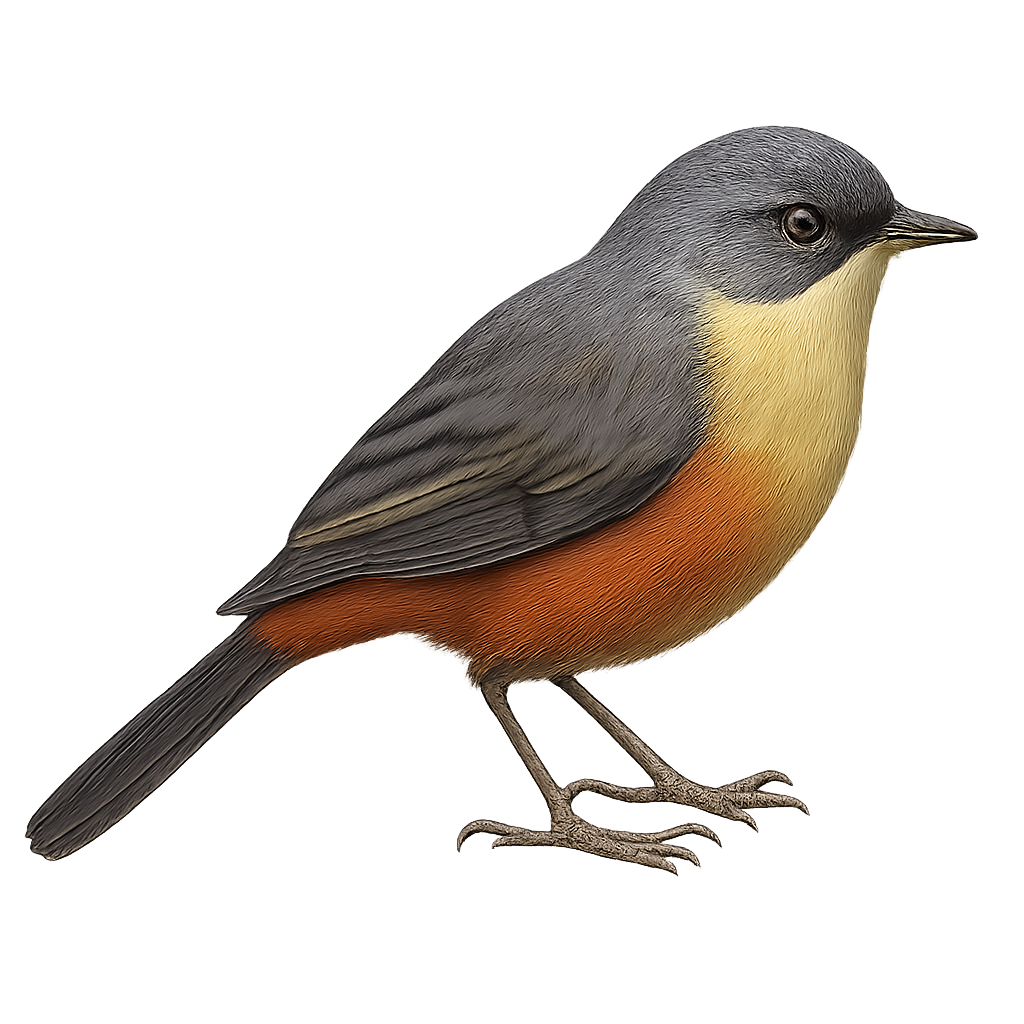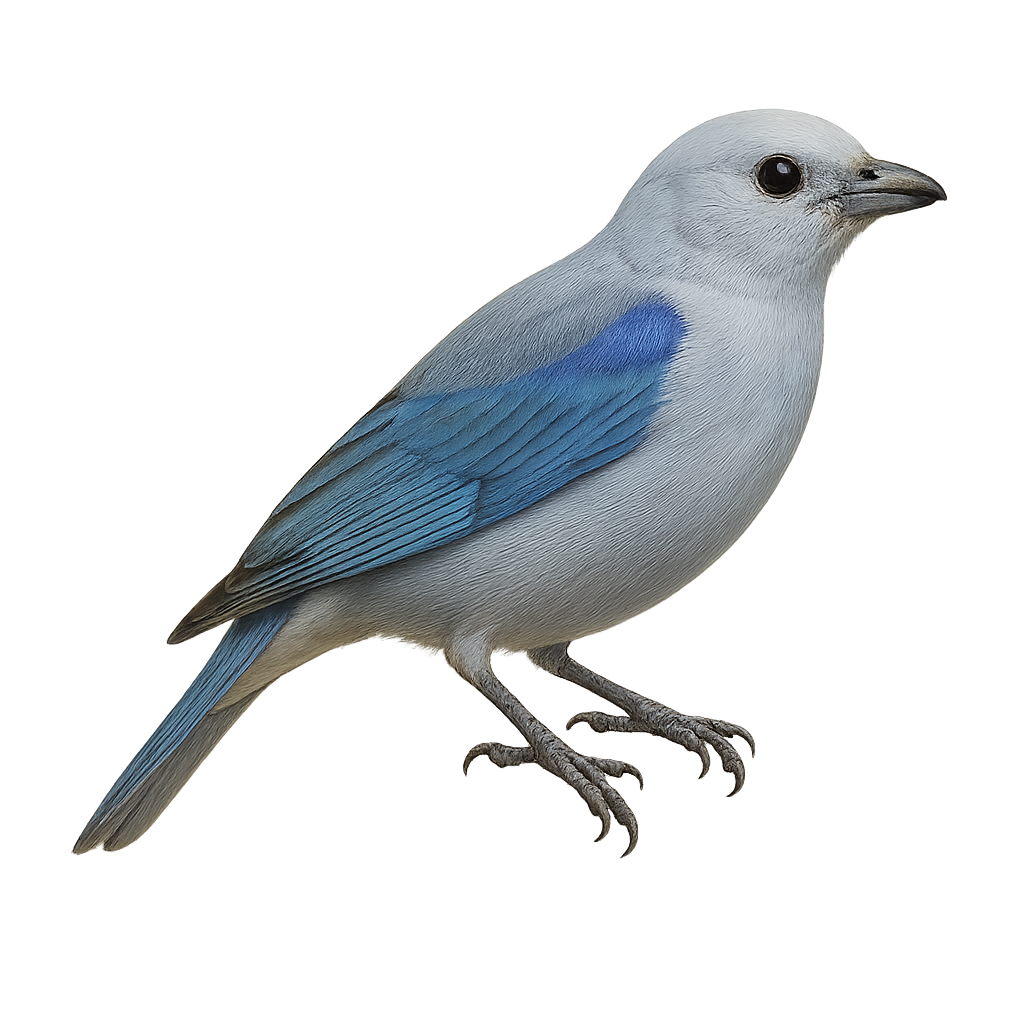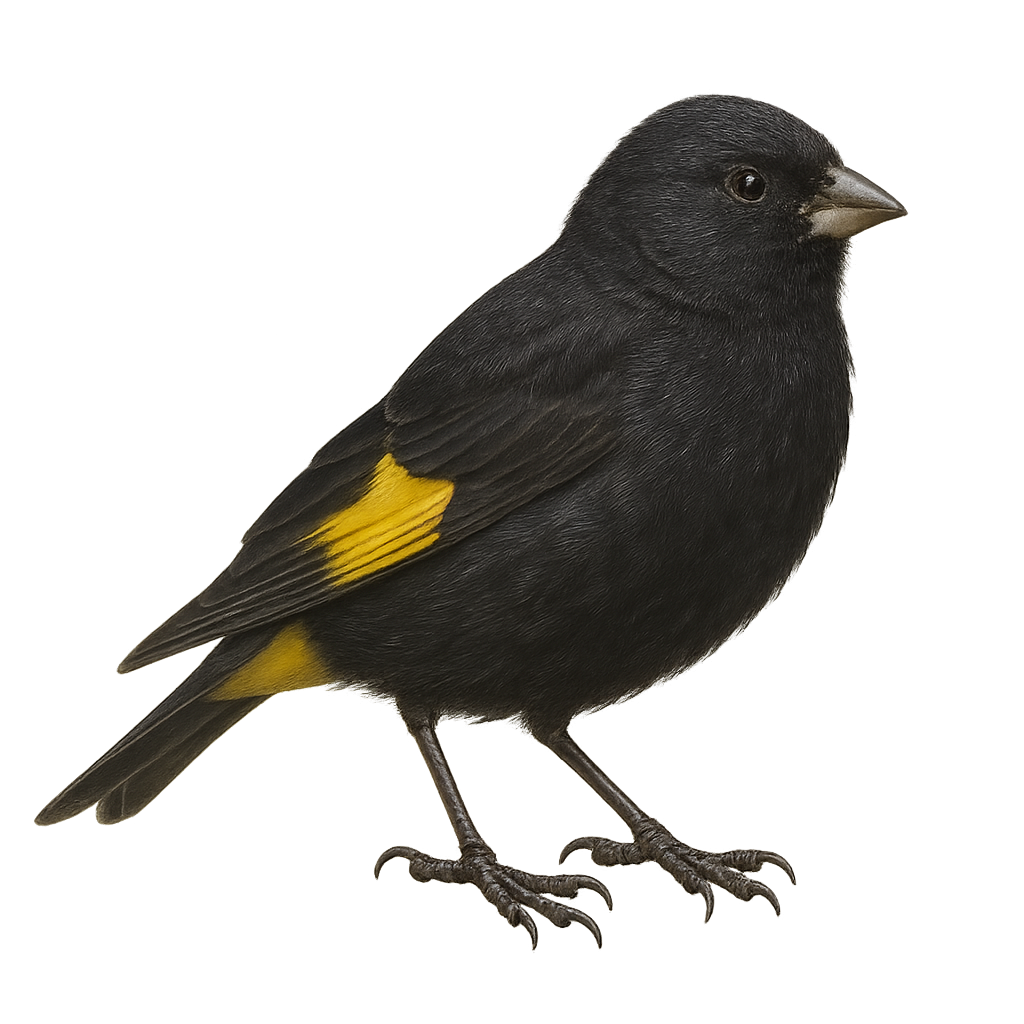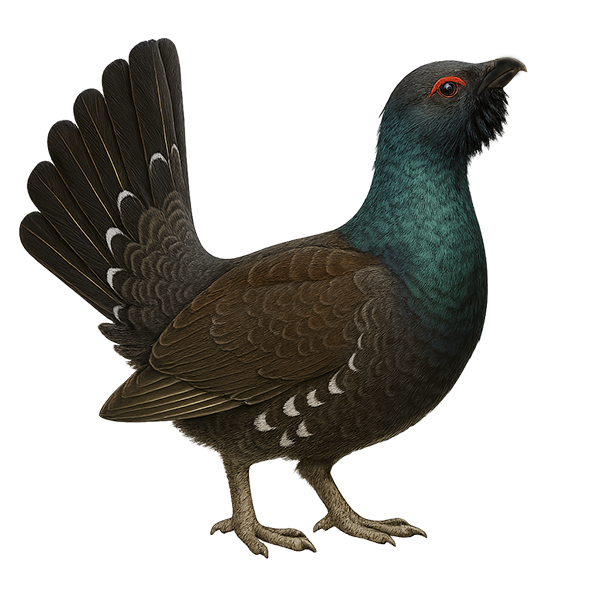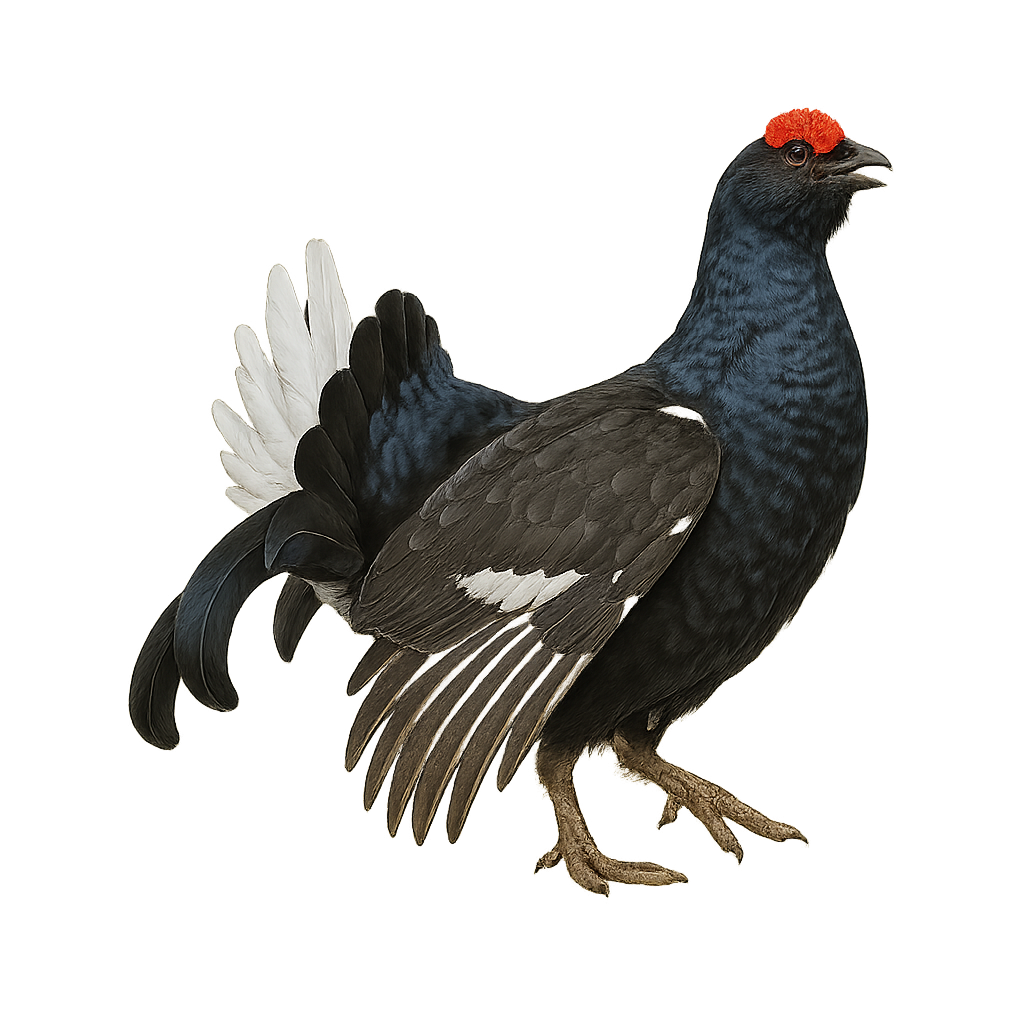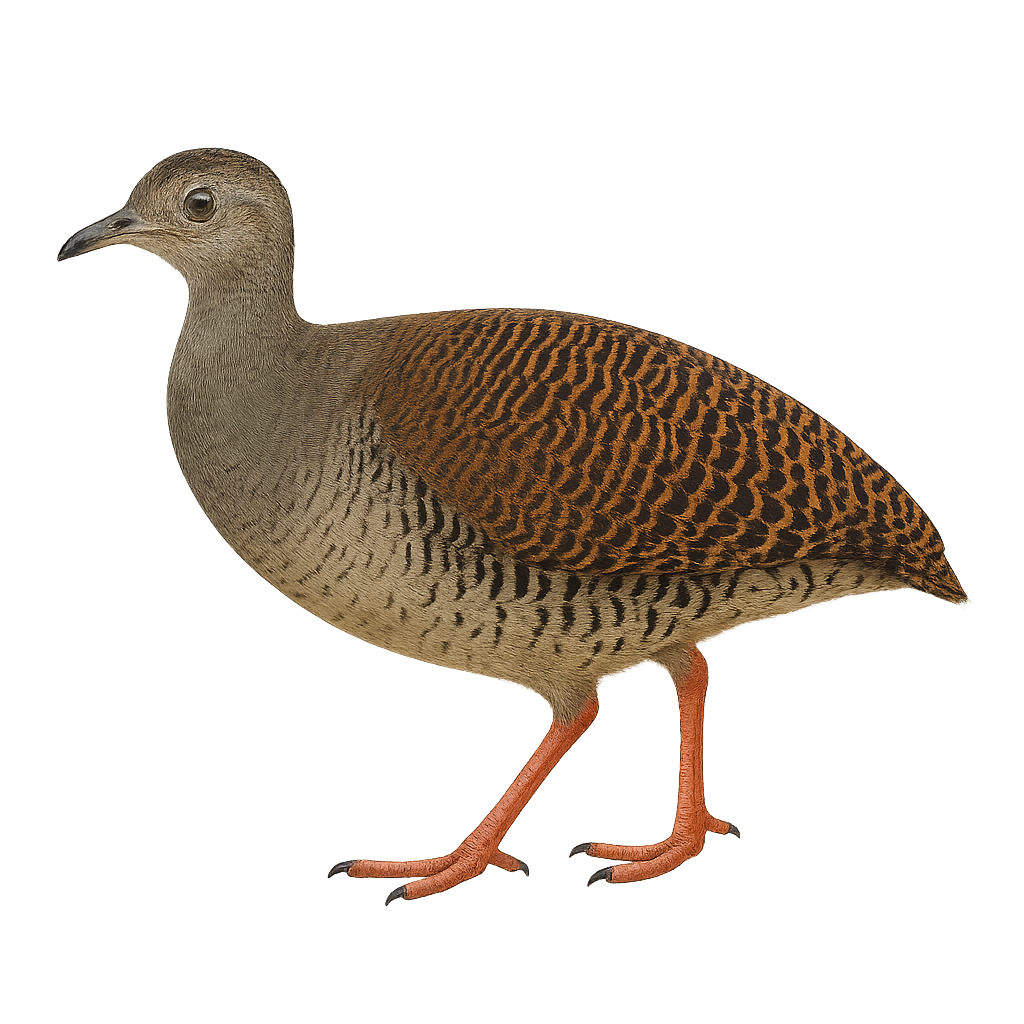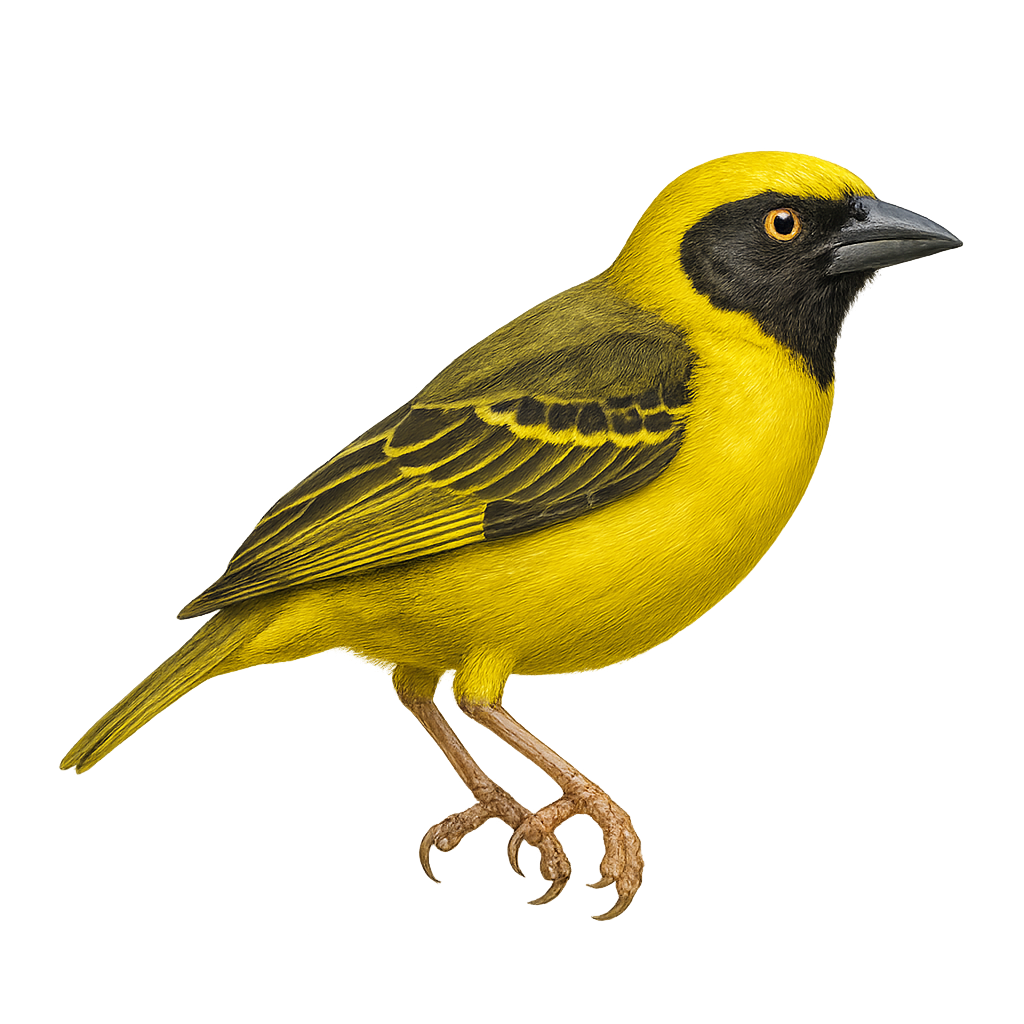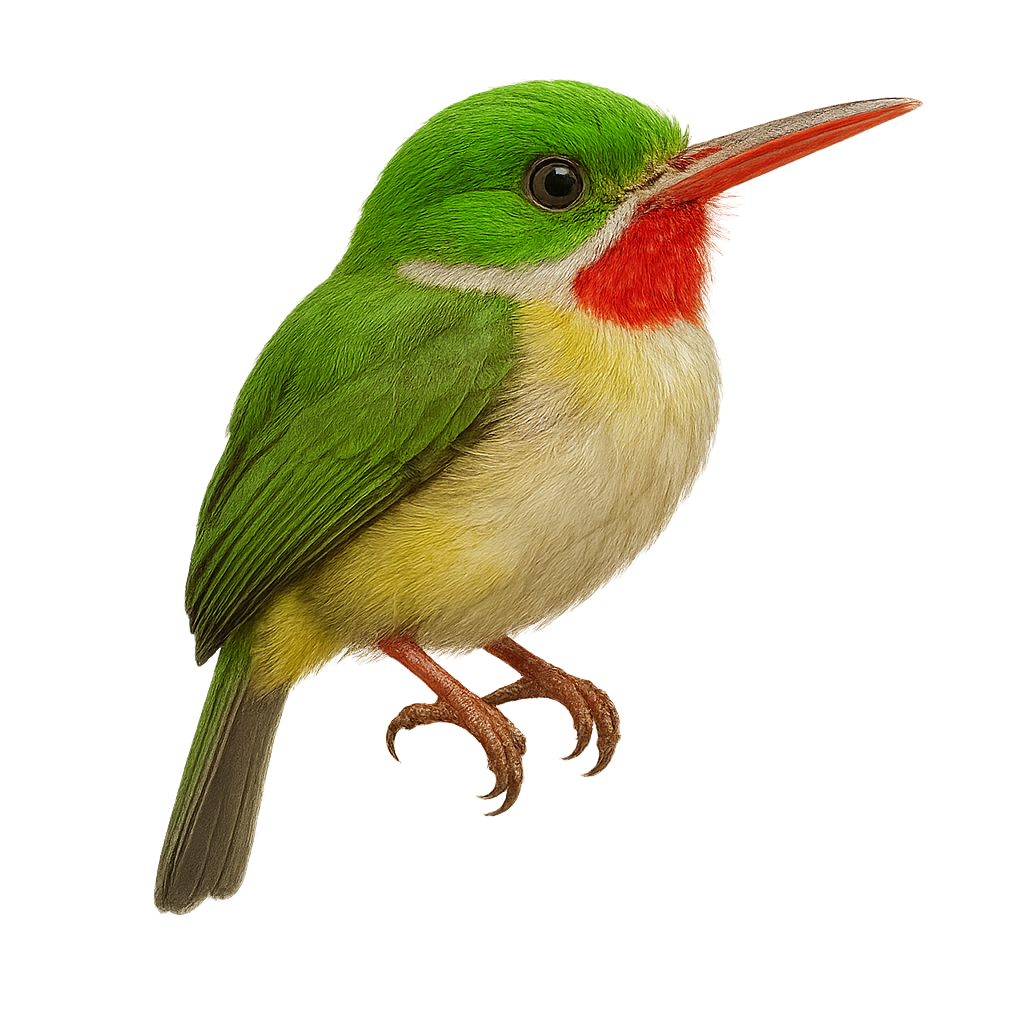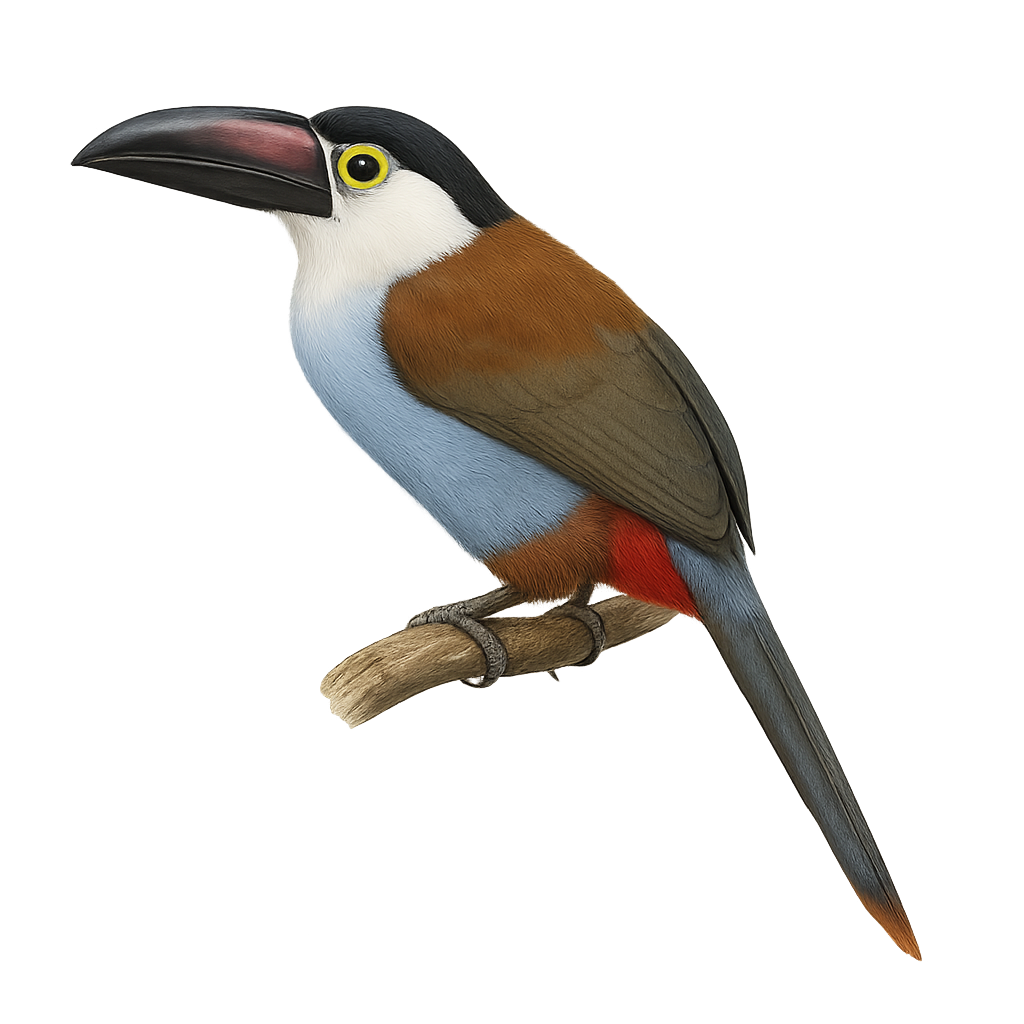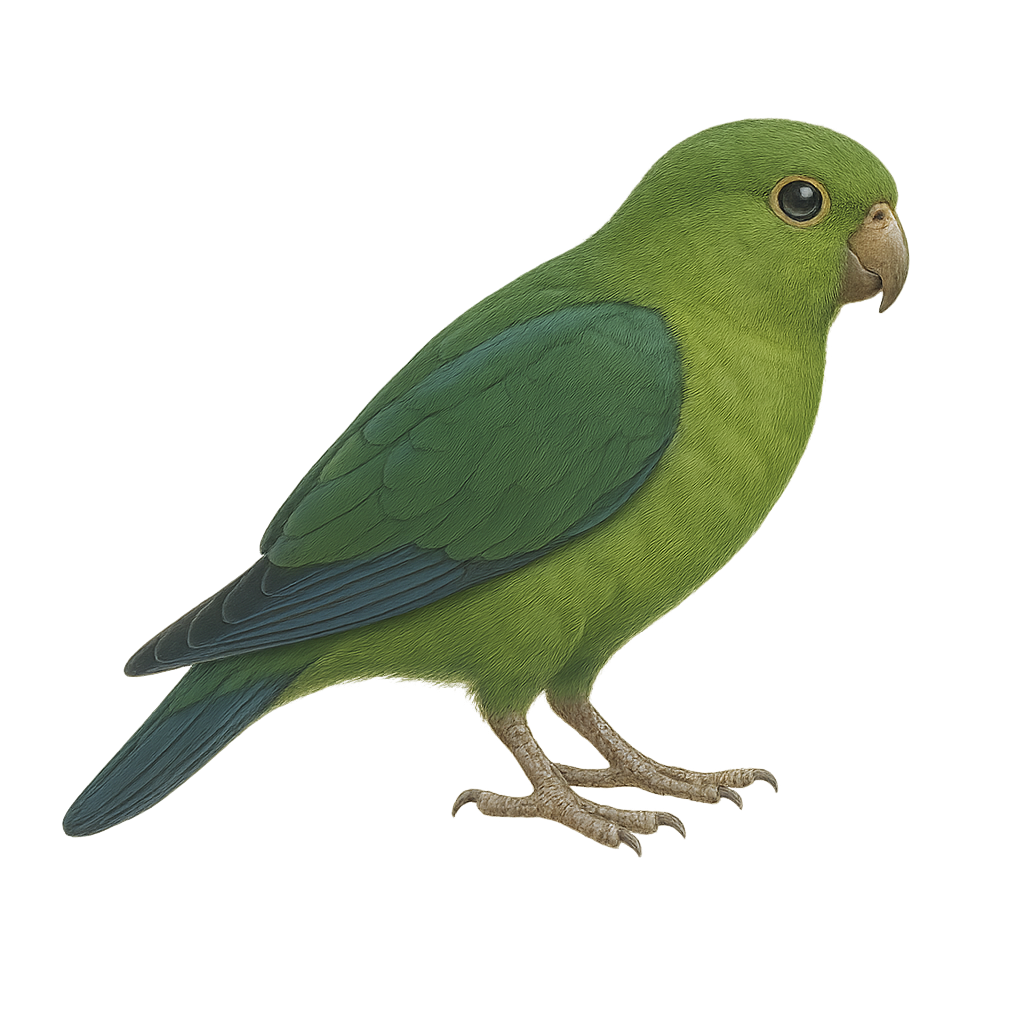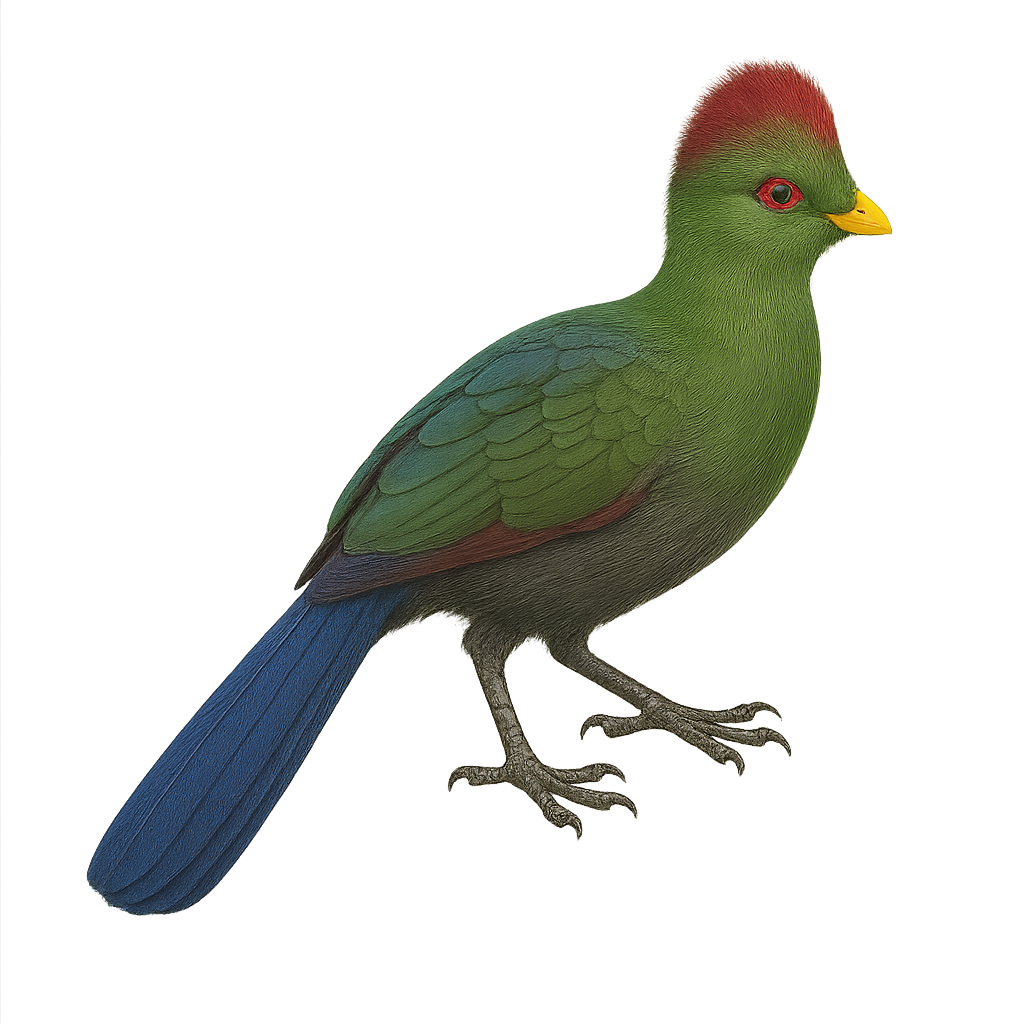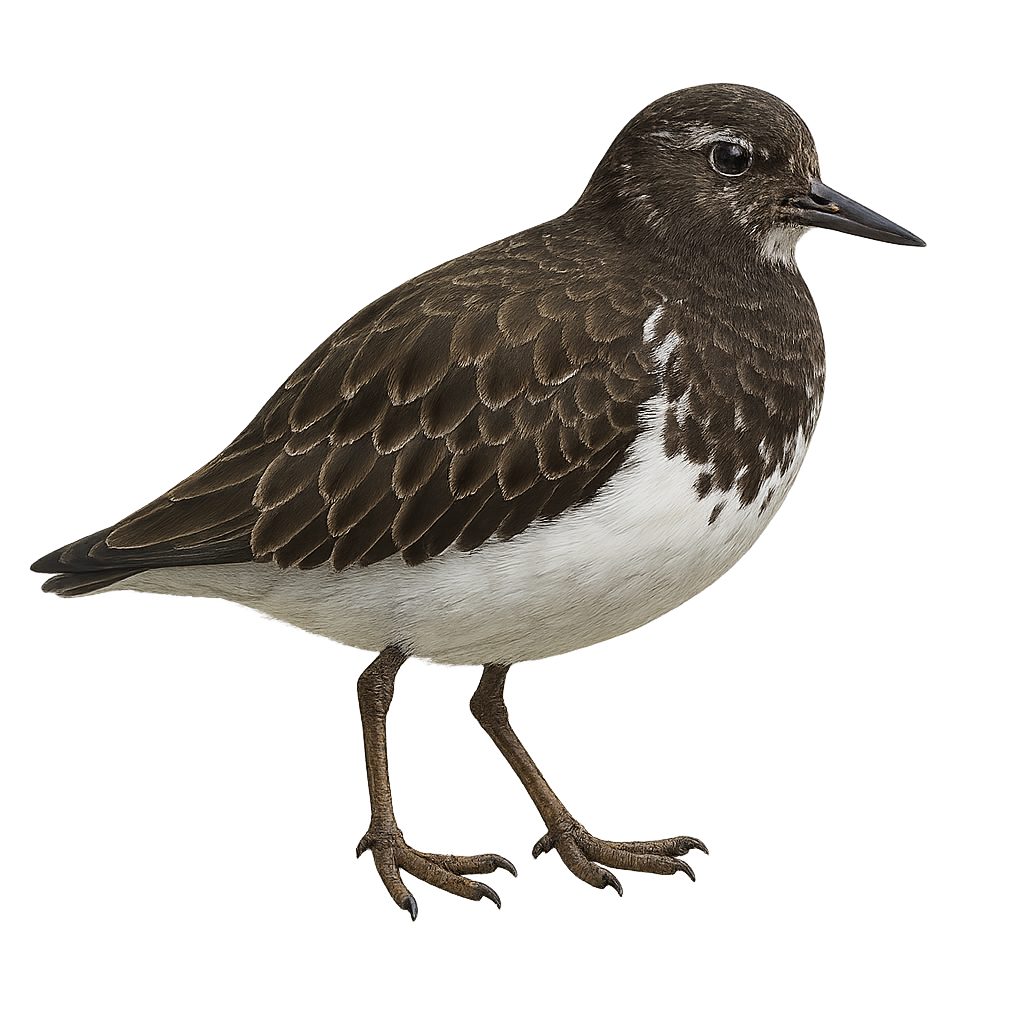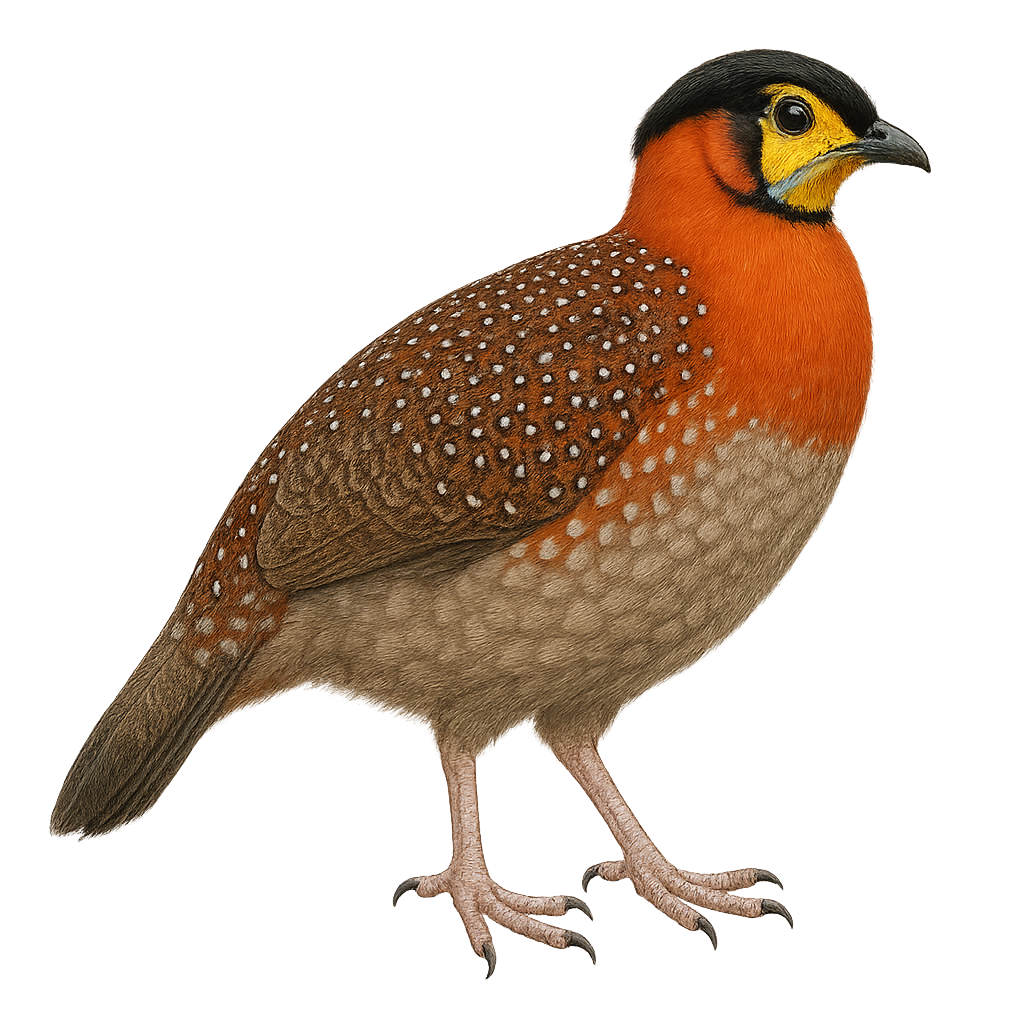The Buller's Shearwater, or Ardenna bulleri, is an elegant and graceful seabird primarily observed in the Pacific Ocean. It is distinguished by its silvery-gray plumage on the back and white on the belly, with long, slender wings that allow it to glide effortlessly over the waves. This migratory bird travels great distances between its breeding grounds in New Zealand and its feeding areas in the North Pacific. It nests in colonies on isolated islands, digging burrows in the ground to lay its eggs. The Buller's Shearwater feeds mainly on fish and squid, which it captures by skillfully diving into the water. Although its conservation status is concerning due to threats to its nesting habitats, conservation efforts are underway to protect this fascinating bird.
The Balearic Shearwater, Puffinus mauretanicus, is a seabird endemic to the Balearic Islands. It is characterized by its dark brown plumage on top and lighter underneath, with long, narrow wings adapted for gliding over waves. Measuring about 30 to 40 cm in length with a wingspan of 75 to 90 cm, it is perfectly adapted to life at sea. This bird primarily feeds on fish and cephalopods, which it captures by diving underwater. Unfortunately, the Balearic Shearwater is critically endangered due to predation by introduced species, marine pollution, and overfishing, which reduces its food resources.
The Bald Eagle is a large raptor primarily found in North America, near bodies of water such as lakes, rivers, and coastal areas. It measures about 70 to 90 cm in length, with a wingspan of 1.8 to 2.3 meters, and weighs between 3 and 6 kg. Its plumage is primarily dark brown with characteristic white head and tail. The Bald Eagle is an excellent hunter, primarily feeding on fish, small mammals, and birds, which it captures by diving or snatching its prey with powerful talons. Although its population once faced a significant decline and was threatened, particularly due to pollution and hunting, the Bald Eagle is now a protected species, and its population has greatly recovered.
The Black Rail is a small, elusive bird known for its secretive nature and rarity. It measures about 10 to 15 cm in length and weighs between 30 and 40 grams. Its plumage is primarily black with shades of gray and brown, and it has distinctive red eyes. This rail prefers freshwater marshes and wet grasslands, where it primarily feeds on insects, small crustaceans, and seeds. It is often heard rather than seen, emitting sharp, piercing calls. Its population is declining due to habitat loss and predation, making it a conservation concern.
The Broad-billed Roller, or Eurystomus glaucurus, is a colorful and fascinating bird primarily found in sub-Saharan Africa. It is recognizable by its vibrant plumage, which combines shades of blue, green, and brown, and its characteristic broad bill. This bird measures about 29 cm in length and prefers open habitats such as savannas, light forests, and wooded areas. It is often seen perched on exposed branches, from where it surveys its territory. The Broad-billed Roller feeds mainly on insects, which it catches in flight with great agility. Its flight is fast and direct, often accompanied by acrobatic rolls.
The Blue-bellied Roller is a fascinating bird known for its vibrant plumage and dynamic behaviors. It features a bright blue belly contrasting with brown and black wings and head. This bird is often seen in the savannas and open forests of West and Central Africa. It primarily feeds on insects but also consumes small reptiles and fruits. The Blue-bellied Roller is a social bird, often seen in small groups or pairs. It is known for its impressive aerial acrobatics, especially during the breeding season. Although its habitat is threatened by deforestation, it remains relatively common within its range.
The black redstart is a small passerine bird found primarily in urban areas, gardens, rocky habitats, and steep slopes across Europe, Asia, and the Middle East. It is distinguished by its dark gray plumage, light belly, and orange-red tail. This small bird is especially known for its lively behavior and ability to adapt to human environments. It primarily feeds on insects and berries, which it finds in urban spaces or wooded areas.
The Black-headed Saltator is a medium-sized bird, measuring about 20 to 25 cm in length. It is easily recognizable by its black cap contrasting with its olive-green back and white belly. Its robust beak is well-suited for its diet, which mainly consists of fruits, seeds, and insects. It is primarily found in tropical and subtropical forests but can also inhabit wooded areas and gardens. This bird is known for its melodious and powerful song, often heard at dawn and dusk. It is usually seen alone or in pairs but can also join mixed-species flocks.
The Boat-billed Heron, or Cochlearius cochlearius, is a fascinating bird from the Ardeidae family. It is distinguished by its broad, spoon-shaped bill, ideal for capturing aquatic prey. This nocturnal heron primarily inhabits mangroves, swamps, and tropical rainforests in Central and South America. Its plumage is mainly gray with a black head adorned with a distinctive white crest. It measures about 50 cm in length with a wingspan of 76 to 86 cm. The Boat-billed Heron is a discreet bird, often difficult to observe due to its nocturnal habits. It feeds mainly on fish, crustaceans, and aquatic insects.
The Brown-winged Schiffornis is a discreet and mysterious bird, often difficult to spot in its natural habitat. It is characterized by its olive-brown plumage, which allows it to blend seamlessly into the dense undergrowth of tropical forests. This bird is primarily insectivorous, feeding on various insects and spiders it captures in the foliage. It is also known for its melodious, albeit discreet, song that resonates through the canopy. The Brown-winged Schiffornis is a solitary bird, but it can sometimes be seen in small family groups. It plays an important role in the ecosystem by controlling insect populations and participating in seed dispersal.
The Black-headed Canary, or Serinus nigriceps, is a small seed-eating bird belonging to the Fringillidae family. It is primarily found in the arid and semi-arid regions of southwestern Africa, particularly in Namibia and South Africa. This canary is easily recognizable by its black head contrasting with its bright yellow body. It inhabits rocky areas, open savannas, and dry scrublands. Its song is melodious, consisting of trills and warbles. The Black-headed Canary is a social bird, often seen in small groups. It mainly feeds on seeds but may occasionally consume insects.
The Bananaquit, or Coereba flaveola, is a small songbird belonging to the Thraupidae family. It is easily recognizable by its black upperparts and bright yellow underparts, with a distinctive white stripe above the eye. This bird is widely distributed across the Caribbean, Central, and South America. It inhabits various environments, from tropical forests to urban gardens. The Bananaquit is an active and curious bird, often seen feeding on nectar, fruits, and insects. It uses its slender, curved bill to access flower nectar, playing a crucial role in pollination.
The Buff-throated Warbling Finch, Microspingus lateralis, is a bird from the Thraupidae family, primarily found in the subtropical and tropical moist forests of southeastern Brazil. It is recognizable by its distinctive plumage, with brown flanks, a white belly, and a gray head. This bird measures about 15 cm in length and feeds mainly on seeds and insects. It is often seen in small groups or pairs, actively moving through the canopy in search of food. Although its habitat is threatened by deforestation, it is currently classified as of least concern by the IUCN.
The Blue-gray Tanager is a medium-sized bird, about 18 cm in length. It is easily identifiable by its bright blue-gray plumage, with lighter shades on the belly and slightly darker wings. Its eyes are black, and it has a short, conical beak suited for its diet mainly consisting of fruits, but also insects. It is primarily found in tropical and subtropical forests, wooded areas, and urban gardens in Central and South America. Sociable by nature, it often lives in small groups and can be seen feeding in the canopy. Its presence is often marked by its melodious and repetitive song.
The Blue-and-yellow Tanager, Rauenia bonariensis, is a vibrant bird native to South America. It is easily identified by its striking blue back and bright yellow belly. This bird measures about 15 cm in length and weighs between 20 and 30 grams. It primarily inhabits subtropical and tropical moist forests, but can also be found in shrublands and gardens. The Blue-and-yellow Tanager is a social bird that feeds mainly on fruits, insects, and nectar. It is often seen in small groups or pairs. Its breeding season varies by region, but it is generally active during the warmer months.
The Black Siskin, or Spinus atratus, is a small finch known for its dark plumage with bright yellow patches on its wings and tail. It is primarily found in the mountainous regions of the Andes, frequenting open areas and high-altitude grasslands. This passerine is often seen in small flocks, feeding on seeds and insects. Although relatively tolerant, it remains cautious of potential threats. Its breeding season typically coincides with the rainy season when food is plentiful. The Black Siskin plays a vital role in the ecosystem by aiding in seed dispersal.
The Brown-crowned Tchagra, or Tchagra australis, is a medium-sized passerine bird belonging to the Malaconotidae family. It is primarily found in wooded regions and savannas of sub-Saharan Africa. This bird is characterized by its brownish head, grey back, and wings with shades of brown and black. Its melodious and varied song is often heard at dawn and dusk. The Brown-crowned Tchagra is a discreet bird, preferring to hide in dense bushes. It mainly feeds on insects but can also consume small fruits. Although it is quite widespread, it can be difficult to spot due to its wary behavior and often dense habitat.
The Black-crowned Tchagra is an elegant and discreet bird, easily recognizable by its black crown contrasting with its brown back and white belly. It primarily inhabits the savannas, open forests, and thickets of sub-Saharan Africa. This bird is often seen alone or in pairs, moving agilely through dense vegetation. Its melodious song, composed of soft and varied whistles, often resonates at dawn and dusk. Although relatively tolerant of human presence, it prefers to stay out of sight, blending into its natural environment. Its ability to adapt to various habitats makes it a common resident in many regions.
The Black-billed Capercaillie, or Tetrao urogalloides, is a striking bird from the Phasianidae family. It primarily inhabits the boreal forests of Siberia and the Russian Far East. This bird is recognizable by its dark plumage and impressive size, with males reaching up to 90 cm in length. Males display black plumage with metallic sheen, while females are more subdued with mottled brown feathers. The Black-billed Capercaillie is a sedentary bird that feeds mainly on buds, leaves, and berries. It is known for its spectacular courtship displays, where males spread their feathers and produce deep sounds to attract females.
The Western Capercaillie, or Lyre Grouse, is a large bird primarily found in the coniferous forests and wooded areas of Eastern and Northern Europe, notably in Scandinavia, Russia, and Poland. It typically measures about 40 to 50 cm in length and weighs between 500 and 800 g. Its plumage is mainly brown and black, with white markings and red hues on the chest. The Lyre Grouse is particularly famous for the spectacular courtship dance of the male, who spreads his feathers in a lyre shape to attract a female. It primarily inhabits dense forest habitats and feeds on berries, seeds, young shoots, and insects. While its population remains relatively stable in some areas, the Lyre Grouse is threatened by habitat loss, deforestation, and human disturbances.
The Black-throated Babbler, or Stachyris nigricollis, is a discreet and fascinating bird primarily inhabiting the tropical forests of Southeast Asia. This small passerine is recognizable by its black throat contrasting with its olive-brown plumage. It mainly feeds on insects and small invertebrates, which it finds by rummaging through dense undergrowth. Although often difficult to observe due to its suspicious nature, it is frequently heard thanks to its melodious and repetitive song. The Black-throated Babbler plays an important role in the forest ecosystem by helping control insect populations. It is also an indicator of the health of tropical forests, as it is sensitive to disturbances in its natural habitat.
The Bartlett's Tinamou, or Crypturellus bartletti, is a shy, ground-dwelling bird found primarily in the humid tropical forests of the Amazon. It is medium-sized, measuring about 28 to 32 cm in length, with a reddish-brown plumage that blends seamlessly into its forest environment. Its call, often heard at dusk, is a soft whistle that echoes through the canopy. This bird is mostly solitary, feeding on fallen fruits, seeds, and insects. Although capable of flight, it prefers to run to evade predators. Its elusive nature and dense habitat make it difficult to spot, but it plays a crucial role in seed dispersal, contributing to the health of its ecosystem.
The Baglafecht Weaver is a medium-sized bird, measuring about 15 cm in length. It is easily recognizable by its bright yellow plumage, contrasting with a black head and brownish wings. Both males and females have similar colors, though males are generally more vibrant. This bird primarily feeds on seeds but also consumes insects, especially during the breeding season. It is found in various habitats, including forests, savannas, and agricultural areas. The Baglafecht Weaver is known for its complex nests, often hanging from tree branches. It is social and often lives in colonies, making it fascinating to observe.
The Broad-billed Tody, Todus subulatus, is a small, colorful bird endemic to the island of Hispaniola, which is shared by Haiti and the Dominican Republic. It is characterized by its bright green plumage on the back, a white belly, and a striking red throat. Its long, slender bill is adapted for catching insects, its primary food source. This small bird measures about 10 to 11 cm in length and weighs between 5 and 7 grams. It primarily inhabits tropical rainforests but can also be found in drier wooded areas. The Broad-billed Tody is a territorial bird, often seen alone or in pairs, and is known for its high-pitched, repetitive song.
The Black-capped Pygmy Tyrant is a small passerine bird belonging to the Tyrannidae family. It is characterized by its black head contrasting with its grayish body and slightly yellow-tinged wings. This tiny bird measures about 9 to 10 cm in length and weighs between 6 and 7 grams. It is primarily insectivorous, feeding on small insects caught in flight or on leaves. It is found in tropical humid forests, forest edges, and sometimes in open wooded areas. Its song is a high-pitched, rapid trill, often heard before being seen. It is generally solitary or seen in pairs, known for being quite discreet and difficult to spot in its dense habitat.
The Black-billed Mountain-Toucan, or Andigena nigrirostris, is a fascinating bird of the Andean forests. It is distinguished by its colorful plumage, blending shades of blue, green, and yellow, and a characteristic black bill. This toucanet inhabits the humid high-altitude forests, often observed between 1,800 and 3,500 meters. It primarily feeds on fruits but also consumes insects and small vertebrates. Its behavior is generally suspicious, making it difficult to observe. Pairs are often monogamous and nest in tree cavities. Although its habitat is threatened by deforestation, it is currently classified as Least Concern by the IUCN.
The Black-backed Parrotlet is a small, arboreal parrot found primarily in the humid forests of northeastern South America, particularly in Brazil. This parrot is distinguished by its bright green plumage, with a characteristic black back that gives it its name. It measures about 15 cm in length and weighs between 40 and 50 grams. Its beak is short and powerful, adapted to its diet mainly consisting of fruits, seeds, and flowers. The Black-backed Parrotlet is often observed in small groups, moving agilely through the canopy. Although its habitat is threatened by deforestation, it is currently classified as "Least Concern" by the IUCN.
The Bannerman's Turaco is a striking bird known for its vibrant plumage, predominantly green with shades of blue and red. Native to the montane forests of Cameroon, it is often found in dense wooded areas where it feeds mainly on fruits, flowers, and leaves. This bird features a distinctive crest and a bright red beak, making it easily recognizable. Although it is relatively tolerant, it prefers to stay hidden in the canopy. The Bannerman's Turaco is a vulnerable species due to deforestation and habitat loss, making its conservation crucial for preserving the region's biodiversity.
The Black Turnstone is a medium-sized shorebird, easily identified by its dark head contrasting with its lighter body. It primarily inhabits the rocky coasts of the North Pacific, from Alaska to California. Known for its active behavior, it flips stones and algae to find food, mainly marine invertebrates. Often seen in small groups, especially outside the breeding season, it is relatively tolerant of human presence but prefers less disturbed areas for feeding and resting. Its population is stable, though it remains vulnerable to coastal habitat disturbances.
The Blyth's Tragopan is a colorful and rare pheasant native to the mountainous forests of the eastern Himalayas. This magnificent bird is easily recognizable by its bright plumage, mainly red with white spots and black patterns. Males display a blue crest and facial wattles that become more vibrant during the breeding season. The females, more discreet, have a brown speckled plumage that allows them to blend into their environment. The Blyth's Tragopan is a shy bird that prefers to stay hidden in dense undergrowth, feeding mainly on seeds, fruits, and insects. Unfortunately, this species is threatened by habitat loss and hunting.


